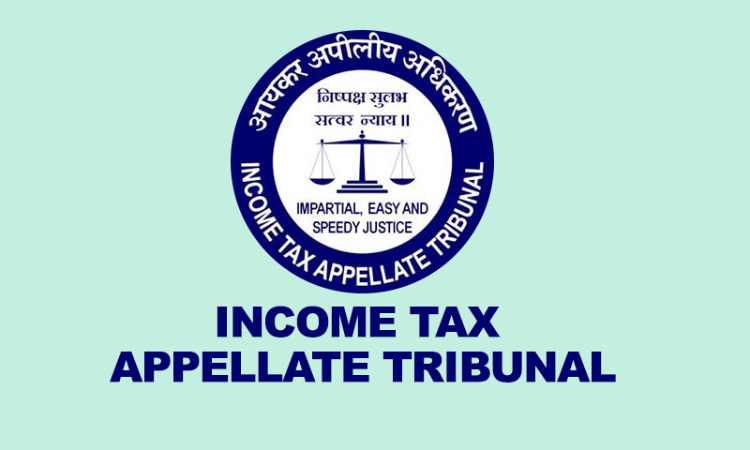- Home
- /
- News Updates
- /
- Capital Gain Exemption Can Be...
Capital Gain Exemption Can Be Availed Only When The New Asset Is Purchased In The Name Of The Assessee: ITAT
Mariya Paliwala
29 July 2022 10:30 AM IST
The Pune Bench of the Income Tax Appellate Tribunal (ITAT) has held that for availing the benefit of deduction under section 54F, the new asset shall be purchased in the name of the assessee.The two-member bench of S.S.Godara (Judicial Member) and Dipak P. Ripote (Accountant Member) has observed that section 54F does not say that the assessee shall invest in the new house, but it says...
The Pune Bench of the Income Tax Appellate Tribunal (ITAT) has held that for availing the benefit of deduction under section 54F, the new asset shall be purchased in the name of the assessee.
The two-member bench of S.S.Godara (Judicial Member) and Dipak P. Ripote (Accountant Member) has observed that section 54F does not say that the assessee shall invest in the new house, but it says the assessee shall purchase a new house. The assessee claimed that the amount for the flat was invested by him. However, it was factually incorrect. As per the documents, the payments for the flat were made by his wife.
During the year under consideration, the assessee, Dilip B. Mundada, sold a property on 30.03.2013 for Rs.1,51,00,000. The assessee had claimed a deduction under section 54F in the computation of long-term capital gain. The assessee claimed to have purchased two flats, namely Flat No.401 and 402. The Assessing Officer allowed the claim of the assessee only for Flat No. 402.
The agreement for purchasing Flat no. 401 was executed on 11.08.2011 in the name of Mrs. Uma Mundada, wife of the appellant. As the original asset was sold on 28.03.2013, it is a fact that flat no. 401 was purchased 17 months prior to the sale. The appellant's wife has acquired a loan for the purchase of the flat from ICICI Bank. Mrs. Uma Mundada is also a director in the company and earns money, which she used to buy flat no. 401.Mrs. Uma Mundada files a separate ROI, not jointly with her husband. Her income proceeds were contributed to the purchase of flat no. 401.
The assessee was aggrieved by the order of the AO and filed an appeal before the Commissioner of Income Tax (Appeal). The CIT (A) held that the sale proceeds were not used to purchase the flat no. 401, as it was already bought before the sale proceeds, approximately 17 months prior to the sale. Thus, the appellant's case does not have the same facts as the case cited by him. The appellant's contention that the two flats are adjacent and have one kitchen also cannot be accepted in light of eligibility for exemption under section 54F. The appellant bought another flat no. 402 in his name after 10 months of buying flat no. 1, and then claimed to have joined them to make one residential unit. Since flat no. 401 was purchased prior to one year instead of what was envisaged in section 54F. The flats 401 and 402 cannot be considered a single residential unit because flat no. 401 was purchased prior to one year from the sale of the original asset. The CIT (A) dismissed the appeal.
The assessee submitted that he had purchased Flat No.401 in his wife's name for the security of his wife. The Flat No.401 was purchased by registered agreement dated 11/08/2011 in the name of Mrs. Uma D. Mundada. However, there was a supplementary agreement vide which the carpet area of the flat was increased from 777 sq. ft. to 841 sq. ft. by the builder due to a revision in the building plan. The assessee had not paid any extra consideration for the increase in the area. All the terms of the agreement remained the same as per the original agreement. The assessee purchased Flat No.402 vide a purchase agreement dated June 26, 2012. The assessee converted the two flats into one flat. Therefore, the assessee was entitled to a deduction under section 54F.
The department contended that Flat No.401 was purchased in the name of Mrs.Uma Mundada on 11/08/2011, meaning more than one year before the sale of the property at Hadapsar Pune. The assessee will not be eligible. The two flats were purchased separately and by separate agreements. As per the building plan, Flat Nos.401 and 402 are separate flats, hence the assessee cannot make them one flat. If the assessee has removed one wall between the two flats, then it is an illegal act. The payments for Flat No.401 were made by Mrs. Mundata, who is an independent assessee having her own PAN and source of income.
The ITAT pointed out that section 54F, which says that the assessee who has sold the asset has to purchase the new asset within the specified time period. The section 54F uses the word, "purchased a residential house." Here the word "purchased" is used; it does not mean "invested." The purchase has to be a legal purchase. To have an effective purchase, the name of the person must be mentioned in the document. In this case, the purchase agreement is in the name of the wife of the assessee, who is an independent assessee earning income independently.
The ITAT upheld the decision of the CIT (A) and AO restricting the assessee's claim for deduction under section 54F for Flat No.402.
Case Title: Dilip B. Mundada Versus The Dy.CIT
Citation: ITA No.1764/PUN/2019
Dated: 15/07/2022
Counsel For Appellant: AR Pramod S Shingte
Counsel For Respondent: DR Arvind Desai


